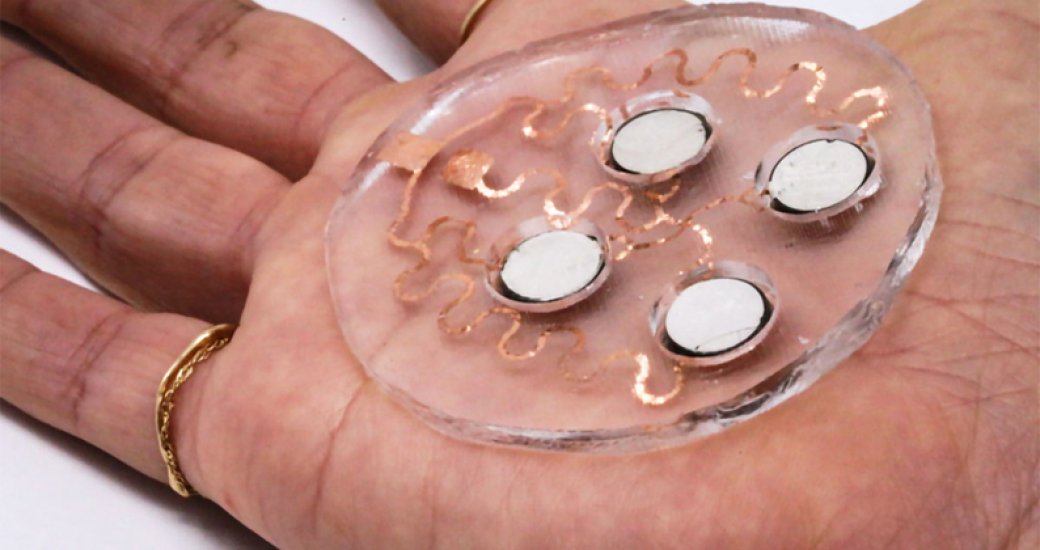
Tiny channels are created for drugs to pass through the tough outer layer of the skin using ultrasonic waves. The skin allows drugs to go directly to the target site, which could hasten wound healing and pain relief.
Credit: MIT
The wearable patch could help in drug delivery for many skin problems, and to deliver hormones, muscle relaxants, and other drugs, the researchers say.
The project was undertaken to explore alternative ways to deliver drugs, as most drugs are given orally or intravenously. The advantage of skin is that the whole gastrointestinal tract could be bypassed, which accounts for the loss of drugs when given orally.
Exposure to ultrasound waves enhances the skin’s permeability to small-molecule drugs. But the existing techniques for this type of drug delivery require bulky equipment. The lightweight, wearable patch makes the process easier.
Several disc-shaped piezoelectric transducers embedded in the patch can convert electric currents into mechanical energy. Each disc is encased in a polymeric cavity containing drug molecules that have been dissolved in a liquid solution. When an electric current is applied to the piezoelectric elements, pressure waves in the fluid are generated, causing bubbles to burst against the skin. These bursting bubbles produce microjets of fluid that can penetrate the stratum corneum, the skin's tough outer layer.
The patch is made of PDMS, a silicone-based polymer that sticks to the skin without a tape. During animal testing, it was discovered that the amount of drug that penetrated the skin was 26 times greater than the amount that could pass through the skin without the assistance of ultrasonic waves.
In comparison to micro needling, the patch delivered the same amount of niacinamide in 30 minutes that microneedles could in six hours.
Furthermore, researchers are also investigating the possibility of implanting similar devices within the body to deliver drugs to treat cancer or other diseases.










